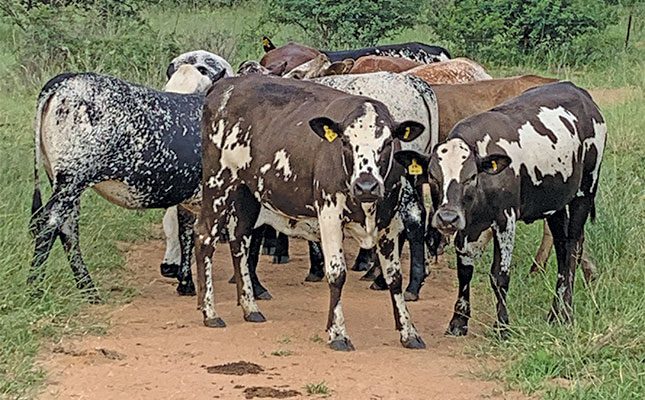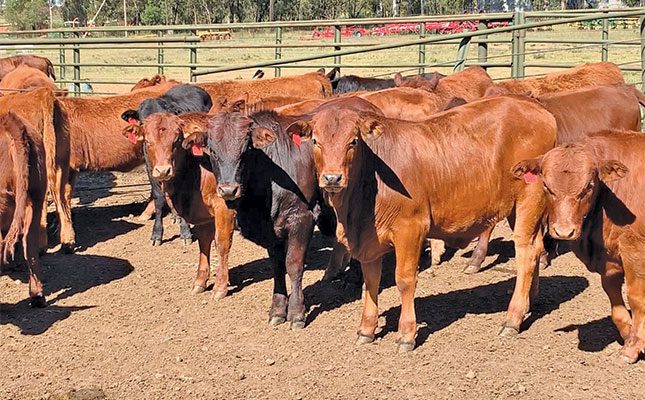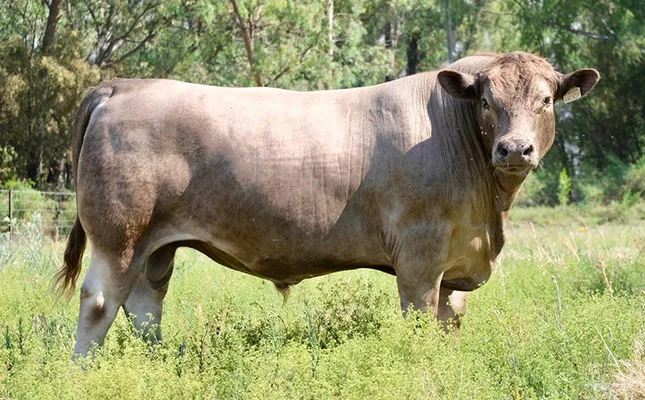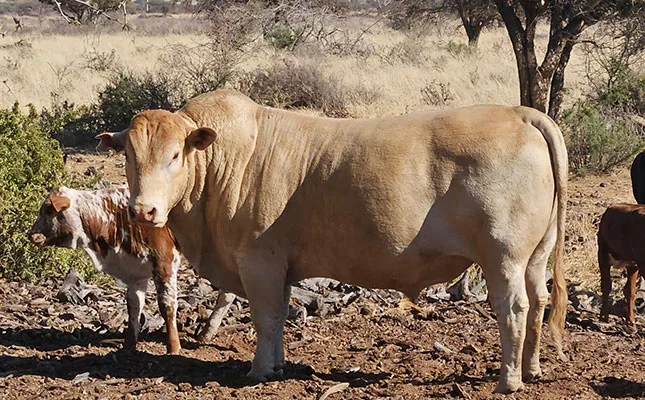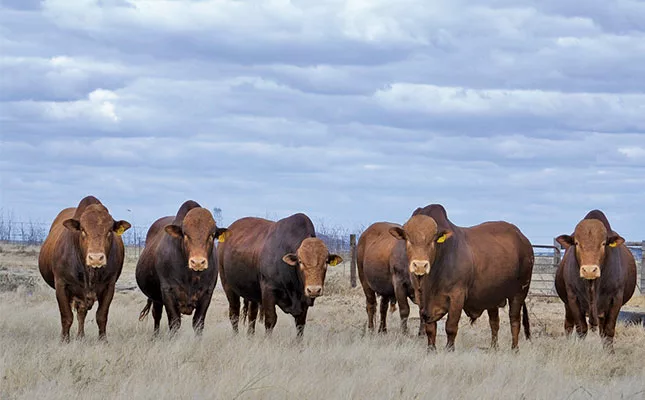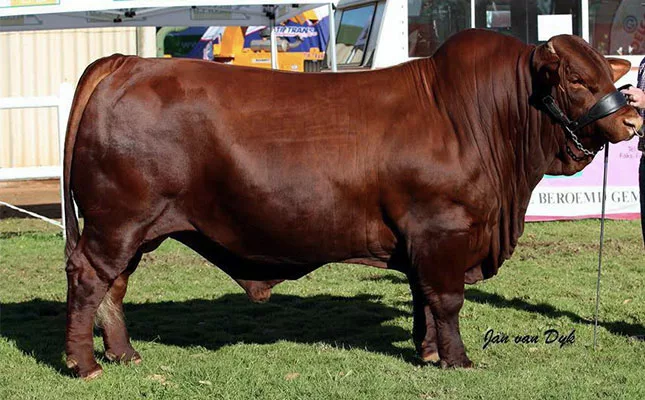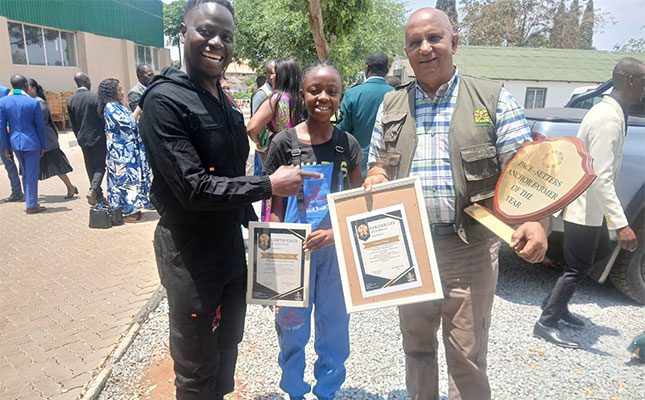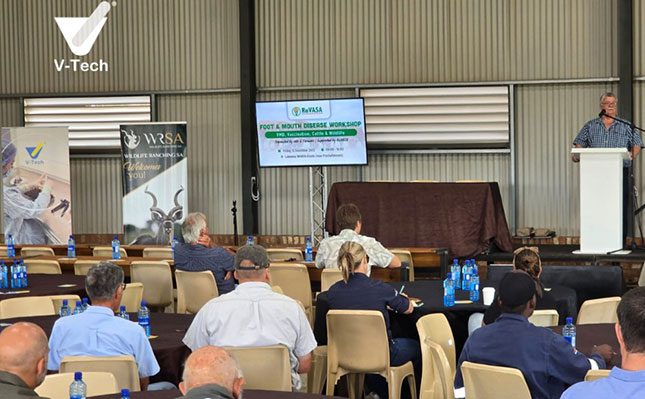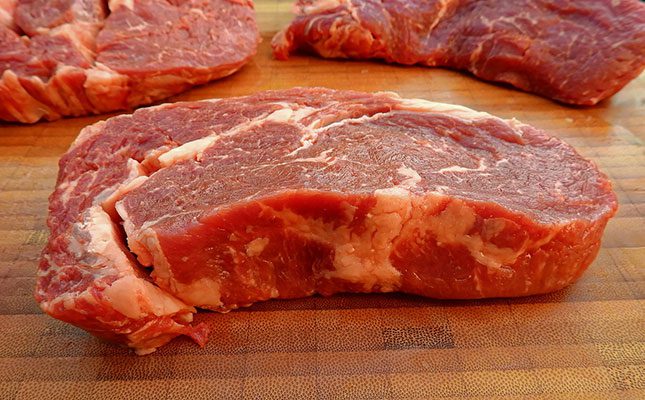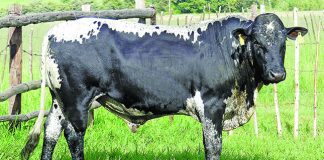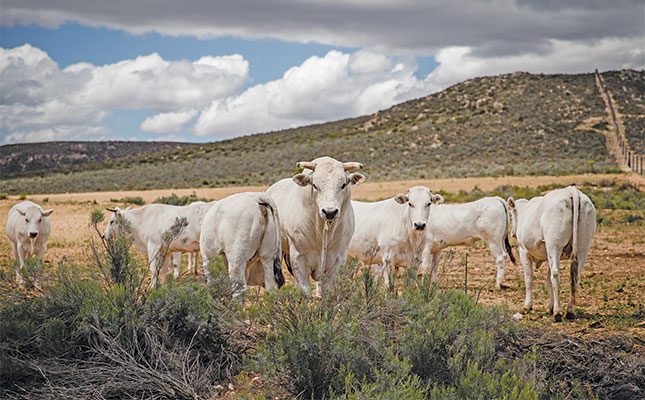
Photo: Supplied
Garren Coetzee and his father, Gert – who passed away last year – made headlines in 2021 when they bought the Chianina bull Ridolfi (OL 11 322) for a record price of R1,175 million at the O-La-La Chianina Auction in Vryburg, North West.
Coetzee recalls their participation in the auction online from their farm, Monti Bianchi near Uniondale in the Baviaanskloof: “We were concerned that the poor Internet connection on our farm might interfere with the bidding, so we decided that my dad would bid from the farm, while I would bid from a café in George in the Southern Cape, where the connection was good.”
They did their homework about the animals beforehand, identifying the ones they wanted to buy. Ridolfi topped their list because of his unique bloodline and impressive, well-balanced physical appearance. They also set the maximum price they were willing to spend on him at R600 000.
Genetic investments
On the day of the auction, at some point during the bidding on Ridolfi, Coetzee realised he and his father were bidding against one another. He tried to phone Gert but couldn’t get through.
“I eventually stopped bidding, as the price had gone way above our budget. The bids just kept going, and my dad won, but at almost double the price we agreed on,” he says.
Thinking back, Coetzee says there was no chance that Gert wasn’t going to win.
“My dad was extremely competitive and driven, and once he set his mind on something, there was no way he’d let it go. I’m just grateful the competing bidder stopped, otherwise I’m not sure where we would have ended up.
“My dad also had a heart attack in his early forties, which made him more aware that ‘every day was a gift’ and should be lived to the full.”
According to Coetzee, the investment was more than worth it: “Ridolfi repaid [us] multiple times through the genetic progress he brought to the stud and the animals we have since been able to sell to farmers in South Africa and other parts of Africa.”
High-value animals
But why did father and son decide to invest so much money in Chianina genetics? Coetzee says that after doing thorough research on the different cattle breeds in South Africa, they decided to start the Monti Bianchi Chianina Stud in 2020, with nine cows and one bull bought from the O-La-La Stud of Christiaan de Jager of Badplaas, Mpumalanga.
He says the Chianina breed is exceptional on various fronts, with its greatest appeal being the value farmers can derive from it.
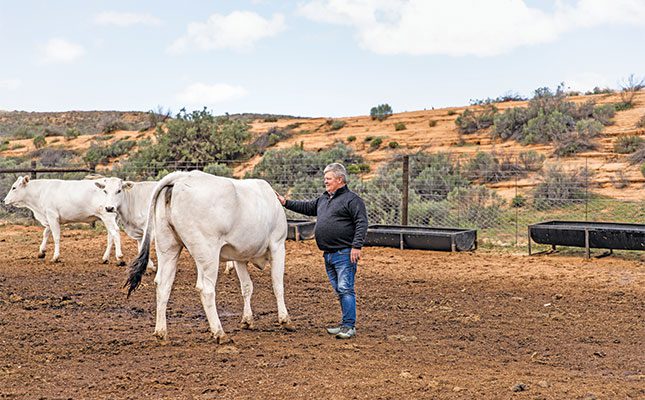
“This is because Chianina stud animals sell for more than double the average price of stud animals in general, meaning you can keep fewer than half the number of another breed to hold the same value,” he explains.
Additionally, Chianinas offer the beef industry enormous potential to maximise red meat yield and quality when used in closed breeding or crossbreeding programmes.
Gentle giants
The Chianina is a large breed, which, Coetzee points out, is why it is referred to as the ‘gentle white giant’.
On average, bulls weigh between 1 050kg and 1 400kg and stand 160cm to 175cm tall, with heights of over 180cm not uncommon. Cows weigh 500kg to 750kg and stand 150cm to 160cm tall up to the withers.
Coetzee says that in a breeding programme run by a fellow breeder in the north of the country, where only Chianinas were used, the breed boasted an average daily weight gain of more than 2kg and a feed conversion ratio of below 5kg of food per kilogram of weight gained.
Additionally, they had a dressing percentage of 63% to 65%, way above the industry average of 50% to 60%.
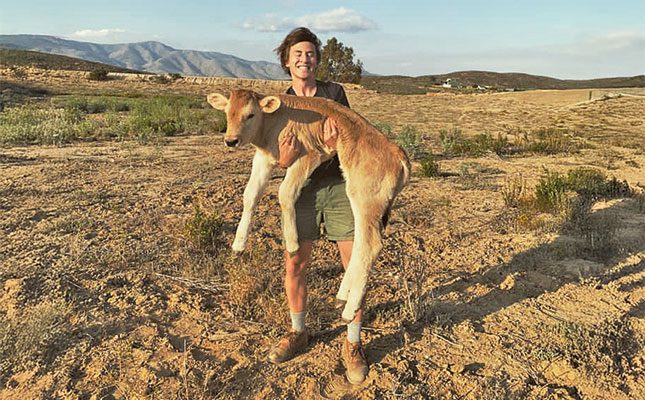
Hybrid power
These traits are also carried over to offspring when Chianinas are used in crossbreeding programmes.
Coetzee says a case study run over nearly 20 years by the same breeder found that the average weight of offspring increased from 24kg when an Nguni bull was used on Nguni cows to 30kg when a Chianina bull was used on Nguni cows.
The growth rate of the Chianina-Nguni offspring was also accelerated, with the crosses weighing 250kg at 205 days, compared with 190kg when an Nguni bull was used.
“The crosses not only gained weight quicker, making them slaughter-ready earlier, but they often also achieved better prices at feedlots than other breeds,” says Coetzee.
Despite their huge size, their use in crossbreeding programmes does not present mating or birth risks, with successes across various breeds. Coetzee explains that the breed’s small head improves ease of birth and prevents complications.
The Chianina also forms the foundation of various composite breeds. One of these, the Chiangus, developed through crossbreeding Chianina and Angus cattle, has reportedly won more steer championships in the US and Australia than most long-established, registered beef cattle breeds.
Superior meat
A third attraction to the breed is its exceptional meat quality. Coetzee points out that the famous Italian T-bone cut, Bistecca alla Fiorentina, or the Florentine steak, comes from the Chianina.
“The meat is lean, which makes it ideal for athletes and [other] health-conscious people, but it also has fine marbling of fat within the muscle, contributing to its tenderness and flavour.
“The fact that it is the only beef used at the famous Babylonstoren Babel Restaurant is a testament to its excellent quality,” he says.
Misconceptions
The Chianina has been in South Africa since 1984. Coetzee estimates that there are around 780 registered Chianina cattle in the country and about 27 000 worldwide.
“The fact that you don’t see Chianinas on every farm and at every show does not mean that they don’t have value, aren’t built for our terrain, or are too difficult to handle because of their size,” he adds.
“It’s rather that there is just such a small number of these cattle around, locally and globally. The truth is, they originated in the Chiana Valley in Italy, with other countries only getting hold of the genetics around the 1970s.
“They are, in fact, one of the oldest breeds around today, illustrating their resilience and adaptability.”
Some people mistakenly think the Chianina might be vulnerable to skin cancers because of its marble-like white coat. Coetzee, however, points out that the breed’s black skin serves as a natural shield against ultraviolet radiation, reducing the risks of skin and eye cancer.
In addition, since they come from a mountainous region in Italy, there is a misconception that Chianinas do not tolerate heat well. However, their black skin also helps them absorb the heat and thrive under a wide range of climates.
“We farm in the Klein Karoo, where it gets very hot in summer and cold in winter, and the Chianinas thrive here with minimal inputs, except supplementary feeding during droughts,” adds Coetzee.
Another misconception is that these animals are unable to cope with harsh terrain because of their long legs. But, Coetzee says they have no problem covering vast mountainous and rocky areas on their farm.
The road ahead
Coetzee currently has 90 animals in the Monti Bianchi Chianina Stud, which includes three stud breeding camps.
“At the start, our focus was on growing the stud, but now that we have enough animals, it is on producing the best possible Chianina genetics. We make use of Phase C tests to identify which bulls to keep,” he says.
Coetzee hopes the breed will become more prominent in South Africa because of its numerous advantages, and for more stud breeders to become involved, especially in the Western and Eastern Cape.
He takes his cattle to shows to raise awareness of his animals and the breed as a whole.
“Once you see a Chianina in living form, the impressiveness of them as a breed and the value on offer through crossbreeding becomes blatantly evident. Adding more body and yield to your crossbreeding requires fewer heads, land, and maintenance for stud purposes.”
Stud producers will always advocate for their preferred breed. Coetzee, nevertheless, confesses that he had a sweet moment of victory at the Riversdale Agricultural Show in the Southern Cape earlier this year, when the wife of a stud breeder of another breed remarked on Ridolfi’s magnificence while was being shown the event.
For more information email Garren Coetzee at [email protected], or phone 084 408 4714.

